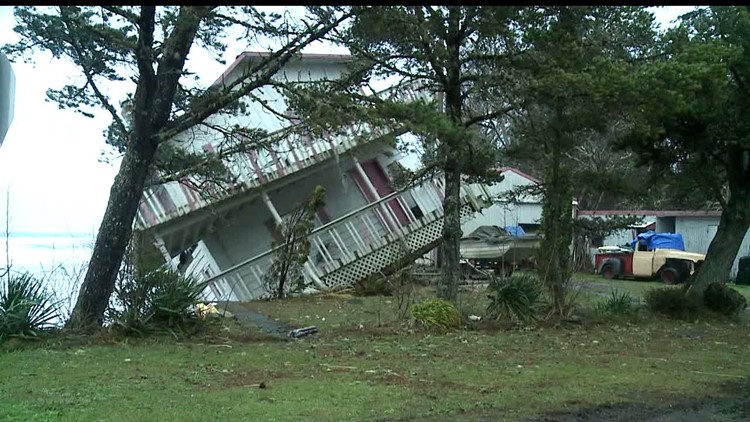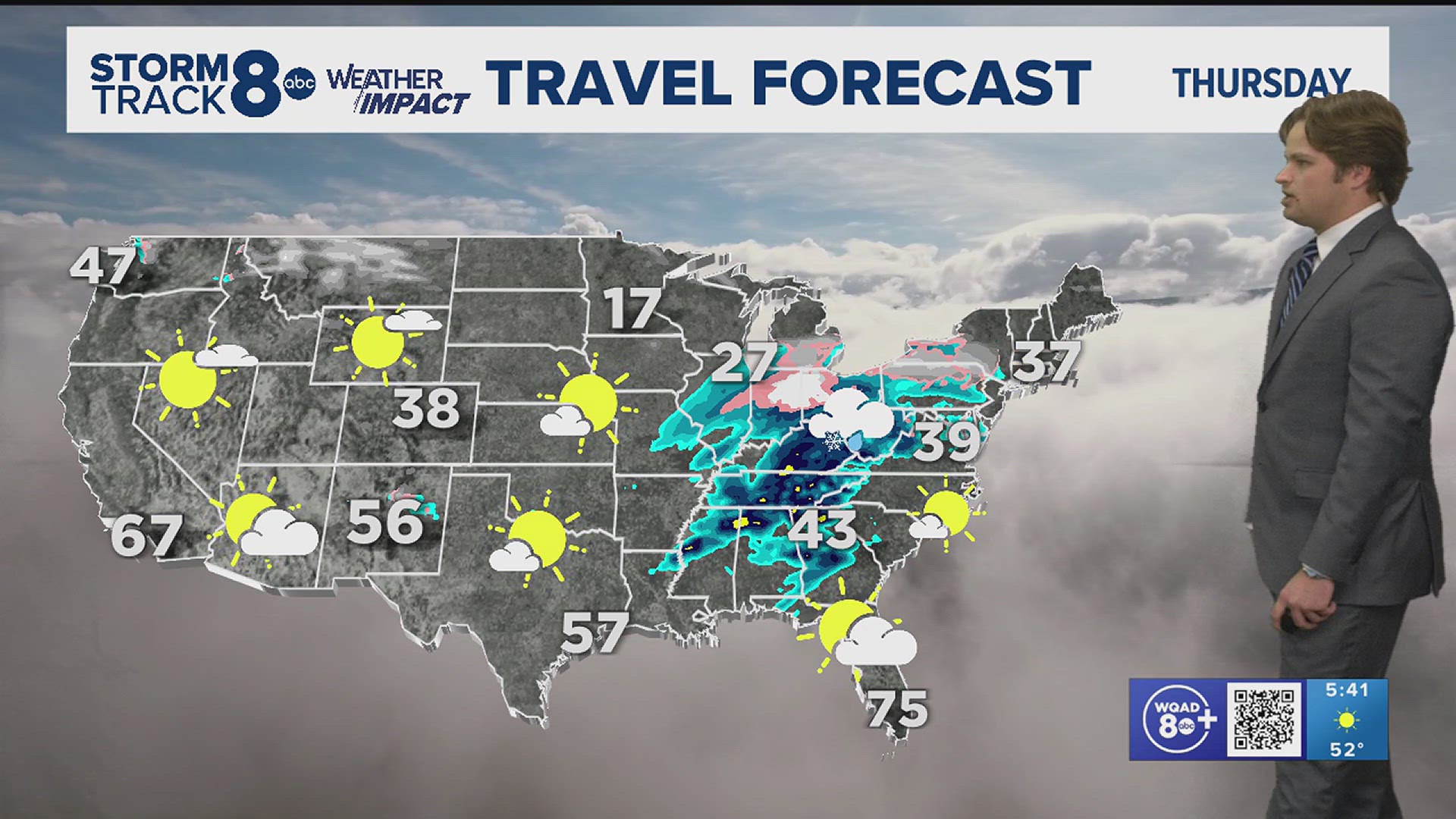SAN FRANCISCO (CNN) -- The Bay Area and other pockets of California began returning to normal Friday, but the storm that has lashed much of the West Coast is not done yet.
More heavy rain, wind and snow are forecast for Friday, with a good chunk of inland California under flood warnings as a result.
The expectation, though, is that it won't be as bad as Thursday, when what's been called the biggest storm in years walloped the region.
Falling trees killed two people in Oregon and left a third seriously injured. The tempest also doused exceptionally drought-stricken California with water, causing street and moderate river flooding, and produced blizzard-like conditions in the Sierra Nevada mountains.
At one point, the combination of powerful winds and battering rains knocked power out to 225,000 customers from Northern California to the Canadian border. That number had fallen to almost 185,000 by late Thursday, according to a CNN tally.
And at 7:45 a.m. (10:45 a.m. ET), the Pacific Gas and Electric Company -- the biggest utility in Northern California -- tweeted that "93% of the customers who lost service have power restored." Public transportation in the Bay Area was also moving much better Friday morning, after the storm prompted the halting of ferry and MUNI cable car service.
Southern California, by then, was getting soaked, including in and around Los Angeles.
Yet, even there, there were signs of progress, with Southern California Edison reporting that power had been restored to more and more people -- though just over 35,000 customers were still without as of 8 a.m.
Tree deaths
In Oregon, a homeless man, Phillip Crosby, died when a tree fell on the tent where he was sleeping, said the Jackson County Sheriff's Office. Crosby's 18-year-old son, Alexander Crosby, tried to revive his father, the Sheriff's Office said.
The tree was 8 to 10 inches in diameter and partially struck Phillip Crosby across the arm and chest, his son, who is also homeless, told officials.
A young boy died in Portland, when a falling tree struck a car he was traveling in, said Portland Fire and Rescue spokesman Lt. Damon Simmons. The child was pronounced dead at the scene.
A woman driving behind that car swerved and struck a second tree. She was taken to a hospital with life-threatening injuries, Simmons said.
Inundating rain
Heavy rain soaked spots in the Los Angeles area early Friday, triggering at least one mud and debris flow in Camarillo Springs, which engulfed homes there, according to the National Weather Service Forecast Office for Los Angeles.
The rain intensity in Northern California on Thursday was reminiscent of a tropical shower in some places, a biblical deluge in others.
Nearly 2.5 inches doused the San Francisco Bay Area, but north of there, just beyond wine country, 14.6 inches washed down on the Petrified Forest.
The rain will put a dent in a historic three-year drought that has sapped reservoirs, threatening farmers and driving up food prices.
"We need it, but I wish it would come more evenly spread out, instead of all in one night," said Kim Cheadle, who commuted from Marin County but found her San Francisco office building closed Thursday.
Traffic hazards
Heavy rains flooded low-lying areas and streets, and gummed up air travel, and high winds with isolated gusts up to 80 mph roughened waterways with high surf.
CNN iReporter Brandon Ball said he flew into San Francisco on Thursday morning and got stuck in a cab on U.S. Route 101.
"Right before approaching Bayshore Boulevard, the freeway was completely flooded on both the north and southbound side, with multiple cars stuck in the water," the Los Angeles resident said.
Cars inched through single-file.
Ferry service was suspended on many routes. A ferry ride across the San Francisco Bay seemed more like a flight in turbulence.
"It was pretty bumpy. I swear we were airborne, up and down, everyone in great spirits and laughing. No normal ferry ride today," said commuter Mark Montemayor.
Flightaware.com reported 236 flight cancellations at San Francisco International Airport on Thursday -- 40% of the day's 589 cancellations nationwide.
Cresting rivers
Flood warnings were issued for major waterways, leading California residents to scramble for sandbags.
Almost 8 inches of rain doused Guerneville on Thursday, and the Russian River there is expected to flood homes and businesses Friday morning before cresting by Friday afternoon.
Howling winds
Portland, Oregon, recorded gusts of 67 mph, the highest wind speed measured at its local airport since 1971.
There were isolated reports of roof damage in California and Oregon, and the wind drove in waves that broke at around 20 feet in height all along the northern half of the West Coast.
In the mountains, wind gusts were so furious that the typically smooth waters of Lake Tahoe roiled with waves, prompting Californians to go surfing.
Hurricane-strength wind gusts were confirmed throughout California's peaks: 139 mph on White Mountain, 135 mph on Mount Lincoln, 112 mph on Slide Mountain, 111 mph on Mammoth Summit and 109 mph in Alpine Meadows, the weather service said.
In the Sierra Nevada, snow has covered Interstate 80, the main pass in the mountain chain, but the road opened for vehicles with maximum tire chains.
A winter storm warning projected up to 3 feet of snow along the Sierra crest by Friday, the weather service said.
An 'atmospheric river'
Much of this moisture, at least along the California coast, comes from an "atmospheric river," a band of heavily moist air that split off from a larger such band in the tropics.
It's as if a river in the sky broke its banks, sending a new tributary 250 to 400 miles wide northeastward to California.
Such atmospheric river drenchings in California are rare but also normal and necessary, the National Weather Service said. They're how the parched state gets up to 50% of its annual rainfall.
The current "river" has been around since late November and already soaked the state last week.



